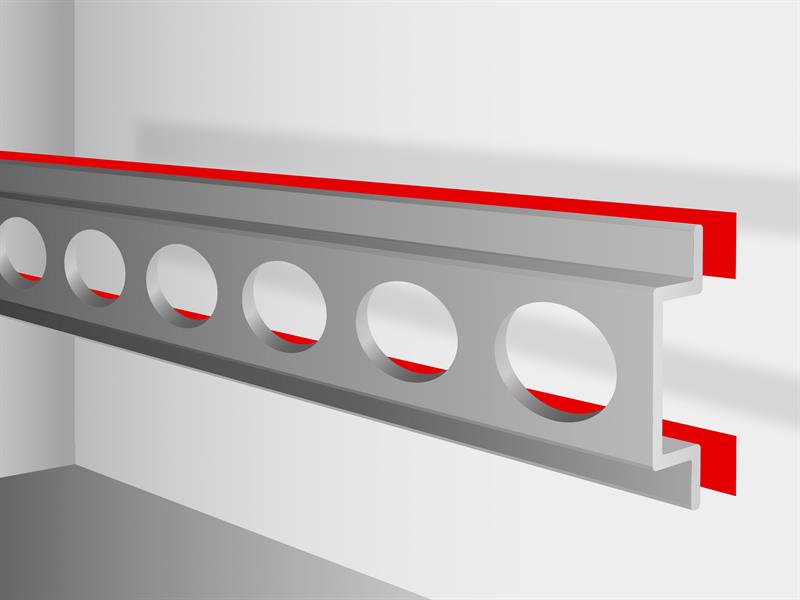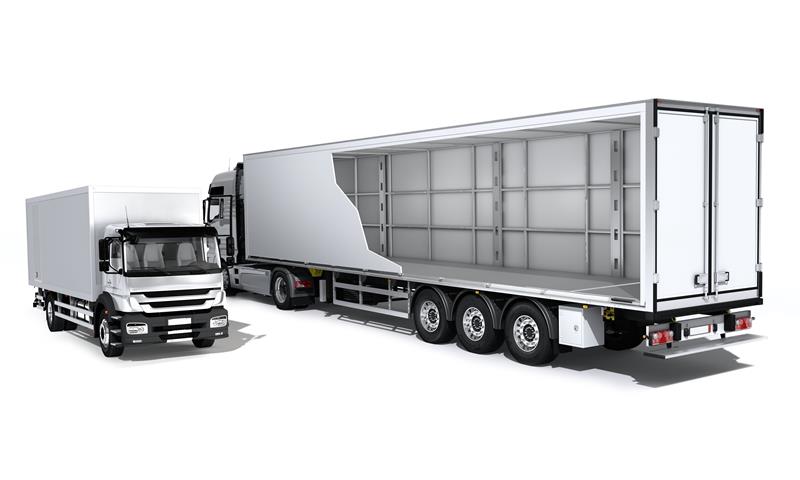Commercial vehicle bodybuilding requires accurate, large-span connections often between dissimilar materials. Such bonds are required where body panels are fixed to vehicle frames, for example, or for the installation of flooring, interior load securing rails.
Traditionally, plywood or glass-reinforced plastic panel materials are most common in bodybuilding applications, but in recent years the desire to improve payload or reduce fuel consumption has driven the adoption of more specialised lightweight alternatives, such as aluminium, or laminate panels with foam or honeycomb interior structures. In many commercial vehicle applications, including trailers and rigid truck bodies, lightweight body panels can deliver significant overall weight reduction at acceptable cost. Replacing plywood with polypropylene panels, for example, can reduce mass by 11kg per m2, saving around a tonne in a standard semi-trailer application.
The nature of the materials involved in vehicle bodybuilding applications largely precludes the use of welding, so converters typically make use of mechanical fasteners, such as screws, bolts or rivets. This results in labour-intensive production operations. Mechanical fasteners must be installed individually, often in a multi-stage process requiring holes to be drilled prior to fastener installation. Providing sufficient load-bearing capabilities on large parts may require fasteners to be installed every few centimetres along the length of a panel and typically require hundreds of fasteners in a complete vehicle. And while mechanical fasteners create a full-strength bond immediately, they may require additional operations for weatherproofing or aesthetic reasons.

An alternative approach that overcomes several of the disadvantages of mechanical fasteners is the use of liquid adhesives. Bonded parts reduce the need for holes, for example. They can also provide superior stress distribution, which is important where lightweight panels are used. And they can create a strong, weatherproof seal in a single operation.
Liquid adhesive bonding has significant downsides however; they require time to cure, which can slow down production operations and increase the requirement for temporary fixtures to keep parts in place until the bond has formed. Ensuring the performance of a liquid adhesive bond may involve significant surface preparation work, and excess adhesive may need to be removed by hand if the bond area is visible to the end customer.
One solution to bodybuilding productivity challenges is the use of modern high-performance double-sided adhesive tapes. Bonding with tape offers several advantages in comparison to both mechanical fasteners and liquid adhesives. Tapes are quick and clean to apply, with minimal waste, simple surface preparation and no post-assembly clean up. Unlike liquid adhesives, tapes provide almost immediate handling strength, reducing cycle times and simplifying manufacturing sequences. Unlike mechanical fasteners, tapes don’t require the drilling of hundreds of time-consuming holes. Tapes can bond and seal in a single process, and they are invisible once applied, providing aesthetic benefits and smooth interior and exterior surfaces that are easy to clean. And because tapes bond without high compressive forces, taped joints are ideal for application on hollow or honeycomb materials provided they are not composites, as these materials are often more challenging, where other methods carry a risk of crushing or damage during manufacture.

Modern industrial adhesive tapes provide high-performance, precision-engineered solutions to even the most demanding bonding challenges. At tesa’s Application Solution Centres around the world, specialist engineers spend their time working with customers to identify the optimum combination of adhesives and tape components to suit their products and applications.
tesa has developed and validated solutions for tough commercial vehicle applications, such as securing large roof or body panels. Properly engineered tape bonds can meet stringent industry requirements for strength, resistance to chemicals, temperature, vibration and waterproofing.
The productivity improvement offered by adhesive tapes can be highly significant. One major bodybuilder was able to reduce the time taken to install trailer roof assembles from three hours to less than one by replacing a liquid adhesive process with tesa ACXplus double sided acrylic adhesive tape. The ease of using the tesa ACXplus tape has reduced the total amount of time required in production, allowing the bodybuilder to double the size of its business.
Tapes don’t just save time in production, they also help to create a safer, more pleasant working environment. Tape bonding can significantly reduce the requirement for operators to work with handheld power tools, for example, cutting down a major source of noise, injury risk and hand-arm vibration exposure. Unlike liquid adhesives, tapes don’t expose staff to the risk of spills or exposure to potentially toxic chemicals.
Tape bonds also perform well in service, proving durable, reliable and long-lasting, even in demanding operating conditions. The even distribution of stress provided by a taped joint reduces the risk of cracking around fastener holes. Tapes with flexible foam or polymer cores can accommodate differential thermal expansion between components, promoting durability when vehicles are exposed to rapid temperature changes. Tapes are invisible once applied, providing aesthetic benefits and smooth interior and exterior surfaces that are easy to clean.
Leading OEMs, suppliers and vehicle conversion specialists are already using adhesive tapes in a variety of applications, including mounting stiffening bars to sidewalls, roof system installation, securing floors and mounting rub strips and other exterior components. The use of high-performance adhesive tapes can help vehicle OEMs and body builders to address a range of challenges in the manufacture and conversion of vehicles, enabling more cost-effective production and designs which perform better in service, reduce environmental impact and save money for their owners.




